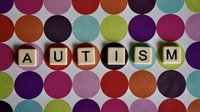Four years ago, our school received the news that no one ever wants to hear: it had been labeled as “CIR” or comprehensive intervention required. As an “F” school, the 200-student institution had to become a “C” school for two years, effectively showing that it could both attain and sustain that higher grade.
Our current principal came onboard for the 2019-20 school year and was tasked with transforming the school. I was hired as its new instructional coach in 2020.
We knew we needed a literacy platform that was user friendly for both teacher and student because our teachers were telling us that their students were really struggling to read. In January 2020, we shut down the whole school to focus on reading and to do our literacy-based response to intervention (RTI). As a CIR school, we were required to continue with our Tier 1 instruction, but the “shutting down” took place during our Tier 2 time.
We have school-wide RTI time where it's all hands on deck for 50 minutes every day. Coming to our school, one of the jobs my administration was tasked with was building the capacity of our teachers. That includes looking at data and how to use it in the classroom.
For example, our administration can use the data to pinpoint and address issues quickly. Our principal will pull up the data and call teachers in to review. This was an important part of our path to becoming a “C” school (and beyond), and it’s something we do continually.
Four Key Benefits
Here are four more ways our program is helping our school achieve literacy gains and overall improvements:
- Differentiated instruction. Our school also benefitted from the platform’s differentiated instruction capabilities. Knowing that we were on deadline to achieve certain academic improvements, we’ve been using the platform to differentiate instruction for every student within the school—and all concurrently.
- Faster intervention. When teachers receive alerts about students who are struggling with a certain skill, they can easily go in, review the alert, and find the related lessons to share with their students. We also have paraprofessionals who help redeliver lessons and otherwise support our RTI efforts. Teachers also use the literacy program when working with small groups of students to provide one-on-one support.
- Good usage. Early on, I knew that usage was going to be key. We wanted to make sure students were using the Lexia Core5 Reading and using it with fidelity. That’s one reason why we started looking at the data early, with a focus on usage time. With 50 minutes of RTI every day, there was no reason why students couldn’t get their prescribed number of minutes in. Today, our students spend at least 10 minutes per day using the literacy program. For the remainder of the 50-minute time slot the students are pulled into small groups and take part in other reading and literacy activities.
- Give credit where it’s due. Our principal is all about culture. Anytime students move up a level in the literacy program, we give them a shout out on the morning announcement, which takes place on Google Meet so all teachers can login and get up to speed on everything that’s going on at their schools. The students love to hear the shout-outs. It’s the perfect way to provide them with the extra attention they so richly deserve for all the hard work they are doing to improve their literacy skills.
The Data Speaks for Itself
According to the most recent data, 58 percent of all students advanced at least one grade level of material and 83 percent of meeting-usage students advanced at least one grade level of material. The school’s strongest usage was in grades K-2, where over 50 percent of each grade used the online program with fidelity.
Also, 60 percent of Bossier Elementary students who started using the literacy platform for the 2021-22 school year—and who were initially working below grade level—advanced at least one grade level of material. Fifty-nine percent of meeting-usage students who started below grade level caught up to grade-level or above material.
Today, Bossier Elementary is a “C” school. And once the most recent year’s scores come back, we’ll be able to maintain that growth and remove our CIR label.
About the author
Michael Gollow (M.EDLE) is an instructional coach at Bossier Elementary School in Bossier City, LA.











